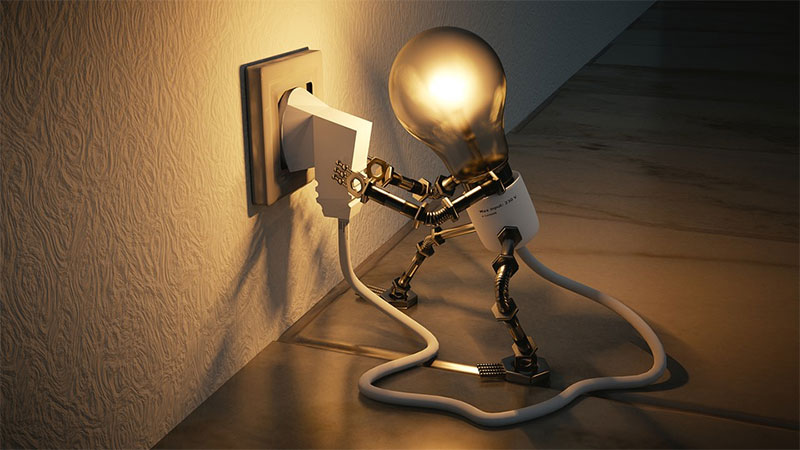Advertisement
In this article, we will be exploring the six terms you need to know about when it comes to electricity. These are important terms that will help you understand how electricity works, what it can do for you, and what safety precautions are necessary when dealing with it.
1) Voltage
Voltage is a measure of electrical potential energy. It’s measured in volts, which are equivalent to joules per coulomb (J/C). A voltage of 120V is the standard voltage in most areas of North America. In the United States, electricity is produced at 120 volts. This voltage flows from your outlet or single-phase breaker to various appliances. Outlets must have no connection to plumbing and the experts at Paladin Plumbing would recommend that you only choose outlets located inside your home. In most cases, voltage is not a concern when dealing with standard household wiring. However, it can be a problem when working with three-phase wiring, which is used in commercial buildings and large buildings that have a lot of electrical fixtures. The voltage in a home or building that has three-phase wiring is typically 208 volts.
2) Frequency
Frequency is the number of complete alternating current (AC) cycles or pulses occurring each second in an electric power system. The US standard frequency is 60Hz, but this varies by country; Japan uses 50Hz while much of Europe uses a standard of 50Hz. It is important to understand frequency because this is the number of Hz that you will see on your electric bill. The more Hz that is used, the more electricity is being used.
3) Conductor
A conductor is an object made from metal, plastic or another material that allows electricity to pass through it easily because those materials don’t hold much electricity. A wire is a type of conductor because electricity can travel through it easily; however, some other objects such as your body are considered insulators (because they hold onto their own charge) instead of conductors. According to the Department of Energy, it is very dangerous to tamper with any electrical lines inside your home because you could be electrocuted by a buildup of electricity in your circuits or even by sending too much power through an outlet.
Current is the flow of electrons through a conductor. The amount of current depends on how many electrons are moving and how quickly they’re moving – so remember: current is measured in amps, which means coulombs per second (C/s). Electricians measure and monitor amperage and voltage so that they can keep track of how much electricity they’re using and for safety reasons as well.
4) Resistance
Resistance is the property of an object that resists or opposes the flow of electrons through it. A material’s resistance depends on its properties, such as its physical geometry and composition. The more resistive something is, the more energy it takes to push electricity through it or heat it. This relationship between voltage and current (amps) defines Ohm’s Law: volts = amps x ohms.
5) Wattage
Wattage is the amount of power that an appliance uses. Watts are equal to amps x volts. So, if you have a 60W light bulb plugged in at 120V, it will use 0.5 amps (60 divided by 120). Understanding wattage is important because it shows how much electricity is being used. An electrician will want to know this number when they’re assessing the home’s efficiency and doing rewiring, for example.
6) Power
Power is the rate at which work gets done or energy flows. It’s measured in watts (J/s) and calculated by multiplying voltage by current (volts x amps = watts). For example, let’s say your laptop charger has an output voltage of 19V and it supplies 2.1A (amps) into the laptop, then this charger would be supplying 42W of power to your computer. Power is necessary to run various appliances that you use in your home, and it’s monitored carefully by electricians.

Electrical power is an essential part of our lives. We rely on it for transportation, heating, and air conditioning, cooking food, lighting homes, running electronics – the list goes on. It’s also something that we have to learn about to use safely – which means understanding voltage levels, frequency (number of AC cycles per second), amps (a unit used to measure electric current), resistance (how easily electricity flows through a material), wattage(amount of power or work done by an appliance) and power (the rate at which energy flows). These are all important terms you need to know when working with electricity!

